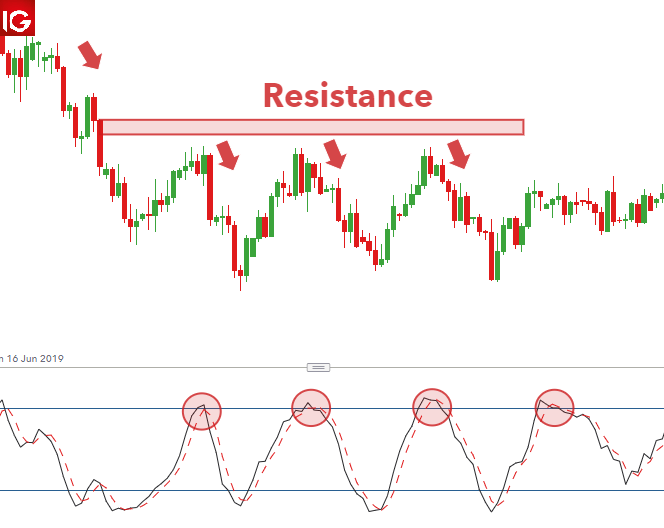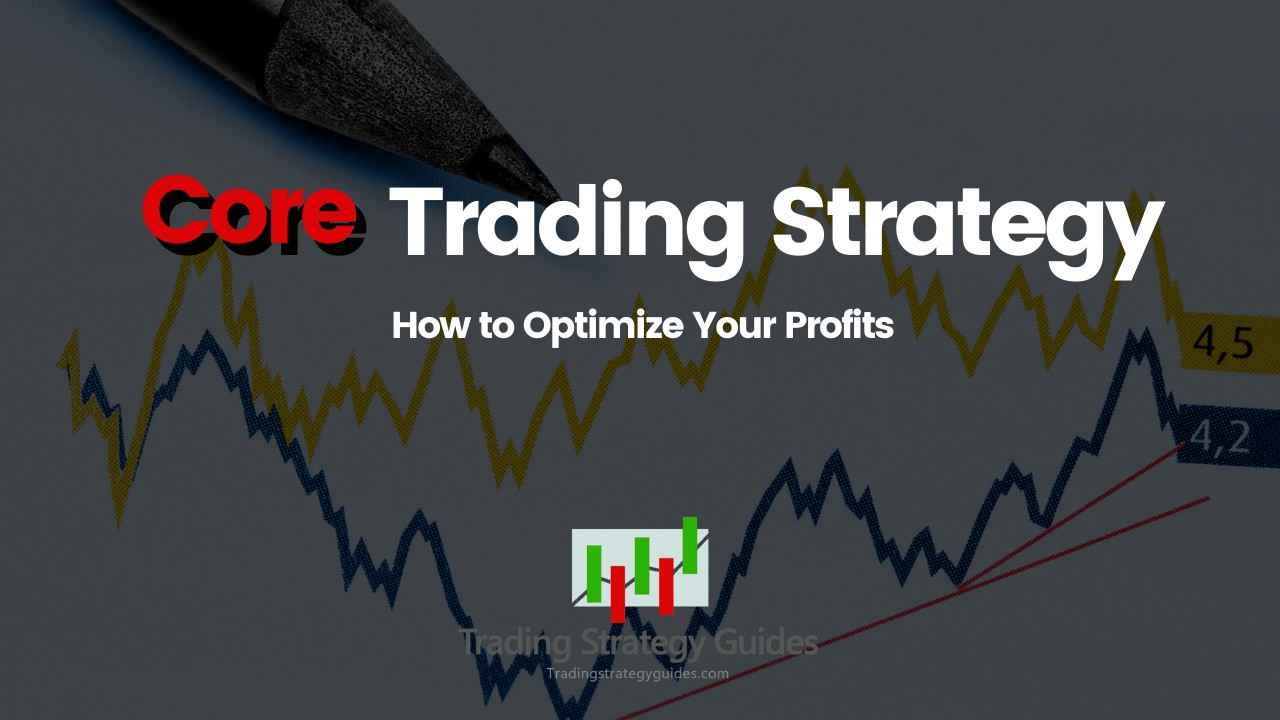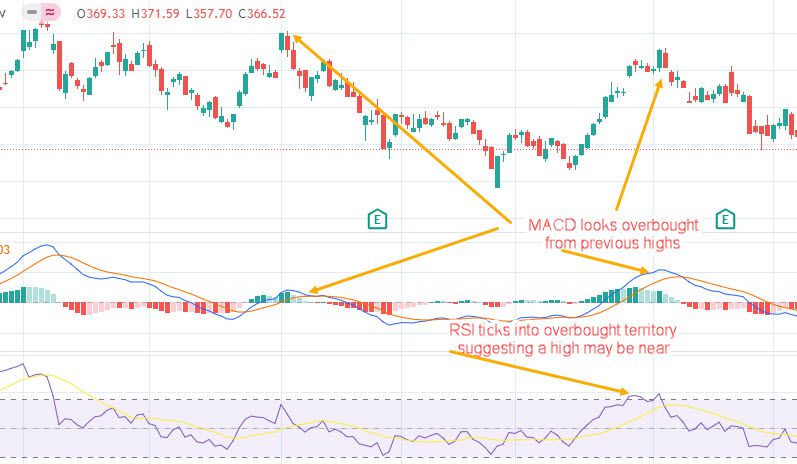Technical Analysis Strategies: Day Trading Decoded for Maximum Profit
You’ve heard the buzz about Technical analysis strategies for day trading, haven’t you? It’s the adrenaline-fueled way to pull profits from the markets, where every second counts and any edge you can find spells the difference between a winning and a losing trade. Think of the stock market as a complex puzzle.
As a day trader, you need sharp tools to crack it open. That’s where I step in. I’ll strip away the fluff and dive straight into the core tactics that I’ve honed over countless trading sessions. From charts that read like an open book to indicators that signal your next move—this no-nonsense approach is all about actionable strategies. Get ready to learn, apply, and hit the ground running with precision and confidence. Let’s decode these markets for your maximum profit.
Understanding the Core of Day Trading Analysis
Decoding Day Trading Chart Analysis
Day trading chart analysis is a must-know for quick wins. First, learn common chart types. The line, bar, and the popular candlestick are key here. Candlesticks show price moves within a time frame, offering fast insights. They’re your radar for what’s happening now in markets. Reading them well points to possible buy or sell moments.
Charts also track price trends over days, weeks or even minutes. This info plots a course for your trading journey. It tells you if trades are heading north or south. By studying these patterns, you decide when to jump in for a trade. Plus, you’ll find risky spots to avoid.
Identifying High Probability Candlestick Patterns
Now for candlestick patterns we love. They send strong buy or sell signals. “Bullish” patterns mean prices might climb. “Bearish” ones hint at likely price drops. It’s crucial to spot these patterns quickly. They’re your bread and butter in day trading.
The “Doji” is one candlestick shape you’ll see a lot. It suggests a possible trend change. “Engulfing” patterns are big clues, too. A small candle followed by a bigger, opposite-color one can spell a shift.
Other top patterns include “Hammers” and “Shooting Stars”. Both can foretell future price moves. Hammer shapes hint at a rising market after a drop. Shooting stars suggest a fall after a climb. Spotting such patterns can lead to a good trade.
Moving averages in day trading help as well. They smooth out price data over time. This shows a clearer trend direction. Simple and exponential are the two common types. By crossing over, they signal to buy or sell.
Momentum oscillators for quick trades are your dashboards for speed. They rate how fast prices change. When prices move fast, you need to act fast. Oscillators like RSI and MACD flash when it’s time to trade.
Volume analysis for trading execution is another big piece. It shows how many shares change hands. High volume often means a stronger move. It’s like knowing how many people are in on the action.
Lastly, the Bollinger Bands strategy. These bands adapt to price changes, showing if moves are extreme. They squeeze and expand with market swings. Think of them as rubber bands around price action. When they’re tight, a big price move may be coming.
By decoding day trading chart analysis and spotting candlestick patterns, you’re preparing for battle. The charts and patterns are your map and compass in the day trading world. They guide you through the high-stakes game of buy low, sell high. Every indicator, from moving averages to volume analysis, is a tool at your disposal. Understand them, and you’re on your way to day trading success.
Indicators for Optimal Trade Execution
Mastering Bollinger Bands and MACD Indicators
Bollinger Bands help us see the market’s moves. These bands have a simple job. They swell wide or shrink tight, showing if the market is loud or quiet. Think of it like a person talking. Loud means more action; quiet means less. We want to trade when the market talks loud, right at the edge of these bands. But we don’t just jump in. We wait.
We pair Bollinger Bands with MACD. MACD stands for Moving Average Convergence Divergence. This tool tells us if the market mood is changing by tracing two lines over time. When these lines cross, it’s like the market is winking at us, hinting it’s time to make a move.
For day traders, MACD is a good friend. It helps us spot trends fast. We watch the MACD lines. When they cross, we get ready. If they cross up, we think about buying. If they cross down, we think about selling. It’s like green and red lights on a road.
Analyzing Volume and Momentum for Quick Trades
Now, let’s talk volume. Volume shows how many shares change hands. We use it to see if a trend is strong or weak. High volume means a lot of traders agree. It makes us confident. Low volume means few agree. It makes us doubt. We look for high volume with price jumps to tell us, “Go!”
Momentum oscillators are our speed gauges. They show if a stock moves fast or slow. We want fast for quick trades. They have cool names like RSI, for Relative Strength Index. This one measures speed by comparing recent gains to losses. When RSI reads high, it means “careful, it’s speeding!” If it reads low, it might mean “chance to jump in!”
We day traders love these tools. They help us guess where prices might go next. But we can’t just rely on one. We need them all together. It’s like a puzzle. Each piece shows a bit of the whole picture. Alongside candlestick patterns and support lines, they make our plan.
Using Bollinger Bands and MACD, we find our spots. Volume and momentum give us the green light. This way, we hop in and out with pockets full, not empty. And remember, in day trading, speed is key, but the right move is king. So we use these tools to make smart, fast plays every day.
Strategic Trade Setups and Entry Points
Leveraging Fibonacci and Pivot Points for Accuracy
I love diving into chart puzzles. They tease the brain and reward sharp traders. Here’s a trick: Fibonacci retracement and pivot points – your new best pals. Use these to spot where prices may pause or change direction. They’re like secret codes in the charts, telling where to jump in or out.
Imagine pulling a rubber band. That’s what stocks do – stretch and snap back. Fibonacci finds these snap-back spots. I draw lines at key percentage points, the rumored hangouts where prices love to take a breather.
Now, think of pivot points as your price compass. They help with clear trade calls. Daily, they reset, showing support and resistance levels. Good stuff comes when prices break these lines. You can check how pivot points guide entry and exit strategies.
Stochastic Oscillator Signals and RSI for Market Entries
Welcome to the fast lane of day trading. It’s all about timing. Enter Stochastic Oscillator and RSI – our market traffic lights. They scream “Go!” when it’s all clear and “Stop!” when danger’s ahead. For day traders on alert, these tools are a boon.
Stochastic Oscillator – it’s like a heartbeat monitor for stocks. When it’s high, the stock might need a breather. When it’s low, get ready; it might sprint. I watch this like a hawk, waiting for the crossover. It’s my cue. When those lines cross, it’s showtime.
RSI or Relative Strength Index is another gem. It shows if a stock’s been overworked or is slacking off. Above 70, too many cooks spoil the broth. Under 30, it may be time to party. I set alerts for these zones, so I’m on my game.
Combining these two gives you street smarts in the market. It’s like knowing the secret handshake at a high-rollers club. You’re in and out before others even know it.
I trade by these signals and keep my strategy tight. Each day, my goal is simple: find the rhythm in the chaos, dance close to the fire, and pocket my wins without a burn. Remember, day trading is part brains, part guts. Trust your tools, and you’ll carve out success one disciplined trade at a time.
Risk Management and Psychological Factors in Day Trading
Setting Effective Stop-Loss and Assessing Risk-Reward Ratios
When you trade, losing money is a real risk. But there’s a trick to keep losses small. You set a stop-loss. This is like a red line. If the price crosses it, you sell, no questions asked. Stick to it, and you won’t lose big.
Day trading is fast. So, you must decide fast how much you might win on a trade compared to how much you could lose. It’s called the risk-reward ratio. Good traders look for at least a 1:2 risk-reward ratio. This means, for every dollar you might lose, you aim to make two.
The best traders know losing is part of the game. They plan for it. They don’t like it, but they know it happens. They use their head, not their heart. They set a stop-loss based on the chart, not how they feel. Emotional trades often lead to big losses.
Knowing where to set a stop-loss takes practice. You check the chart for support and resistance. These are like floors and ceilings for a stock’s price. Your stop-loss should be under the floor if you’re buying, and above the ceiling if you’re selling. This way, you lock in your loss before it grows.
The Psychological Edge: Backtesting and Discipline in Trading
Trading is not just about charts and numbers. Your mind matters too. You have to test your plans. It’s called backtesting. You look at old trades using your current idea to see if it would have worked. If it did well before, it might do well again.
Having rules helps. Stick to your trading plan every day. The market is full of noise – exciting news, scary drops, and surprise jumps. If you let these get to you, you’ll make bad choices. Keeping a clear head and following your plan keeps you steady.
The best traders are like robots. They don’t get too happy when they win or too sad when they lose. They know they need a cool head to see the real patterns in the market.
When you test your trading ideas on past data, look at lots of trades. One good trade doesn’t prove your plan works. And one bad trade doesn’t mean it’s broken. You need lots of data to know if your plan is good.
In day trading, the market moves fast, and so do your emotions. But if you set smart stop-loss levels and follow your rules, you stay in control. And remember, always test your plan before using real money. That way, you trade with your head, not your heart.
In this post, we dove into the heart of day trading. We kicked off by breaking down chart analysis and spotlighting key candlestick patterns to watch for. I showed you the ropes on using Bollinger Bands and MACD indicators. We talked about sizing up volume and momentum to make smart, quick trades.
Then, we tackled trading setups. I shared how to use Fibonacci levels and pivot points for pinpointing great entry spots. We also looked at how market entries get a boost from the stochastic oscillator and RSI.
Lastly, we covered how to keep risks low and stay sharp in the trading game. Setting stop-loss limits and understanding risk-reward ratios are vital. Plus, the mental game counts; backtesting and discipline set you apart.
Here’s my final two cents: day trading is like a puzzle. Put the pieces I’ve outlined together, and you’re on track to win. Use what you’ve learned here today, and you can trade smart and come out ahead. Keep learning and stay on top of your trading game!
Q&A :
What are the most effective technical analysis strategies for day trading?
Successful day trading relies on effectively analyzing market data to make quick decisions. Some of the most effective strategies include using trend indicators like moving averages to identify market directions, momentum indicators such as the Relative Strength Index (RSI) to assess speed of price changes, and volume analysis to understand the strength behind market moves. Day traders also often use chart patterns like triangles, flags, and head and shoulders to predict future market movements.
How can traders leverage moving averages in day trading?
Moving averages are key tools in day trading, smoothing out price data to identify trends. Traders can use short-term moving averages to spot immediate trend directions or employ multiple moving averages, such as the 50-day and 200-day, to identify potential support and resistance levels. Crossover strategies, where a short-term moving average crosses over a longer-term one, can indicate potential buy or sell signals.
Can technical analysis alone be sufficient for profitable day trading?
While technical analysis is a crucial aspect of day trading, relying solely on it can be risky. It is often recommended to combine technical analysis with other forms of market analysis, such as fundamental analysis, to confirm the signals. Additionally, successful day trading also requires solid risk management strategies and emotional discipline to stick with the trading plan.
What role does chart pattern recognition play in day trading?
Chart pattern recognition is central to technical analysis as patterns can suggest continuation or reversal of trends. Recognizing patterns like cup and handle, double tops and bottoms, or wedges helps traders anticipate potential price movements. Familiarity with these patterns allows for more informed decision-making on entry and exit points during day trading.
How important is backtesting technical analysis strategies for day trading?
Backtesting is a critical step for evaluating the effectiveness of technical analysis strategies. By applying strategies to historical data, traders can assess performance, adjust parameters, and gauge potential profitability before risking real capital. Backtesting helps in refining strategies to improve overall success in day trading. However, it is important to remember that past performance is not always indicative of future results.



